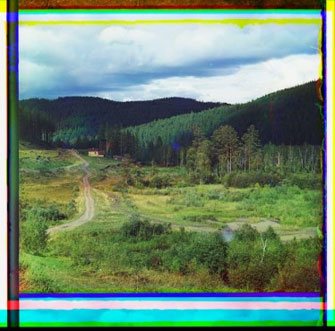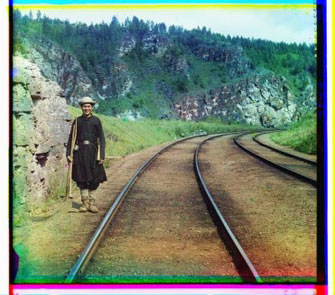So It Was in
Old Russia

Photo © Procoudine-Gorsky/Bibliothèque du Congrès Washington
The current exhibition at Paris’s Musée Zadkine, “Voyage dans L’Ancienne Russie,” reminded me of a passage by Roland Barthes in La Chambre Claire. He wrote that the sadness, beauty and essence of the photograph all stem from its unchanging capacity – which he named “ça-a-été”’ – to represent things that no longer exist.
This selection of beautiful photographs taken by the Russian noble Sergey Mikhaylovich Prokudin-Gorsky (1863-1944) between 1904 and ’16 is presented in the house where Russian sculptor Ossip Zadkine lived with his wife Valentine Prax from 1928 until his death in 1967. Situated well off the Rue d’Assas, the whitewashed house, with its garden and detached workshop, is spacious and quiet. Just like, it might be said, much of pre-industrialized Russia.
Technically, the exhibition is a tour de force. Prokudin-Gorsky was a talented photochemist, and in 1905, he modified Adolf Miethe’s three-color process to make color distribution in the photograph more constant. His intention was to make the photograph “true to life” for the first time. Impressed, Czar Nicholas II commissioned Prokudin-Gorsky in 1909 to produce a “systematic record” of the landscapes, people and practices of old (pre-industrialized) Russia. The majority of the exhibition is made up of photographs taken on expeditions financed by the czar. One of their purposes was to document a dying way of life led by people surrounded by, but not caught up in, industrialization.
The first room of the exhibition shows photographs taken to commemorate the 1812 Battle of Borodino, which took place near Russia’s border with Belarus, in the region where Zadkine himself grew up, offering us a vision of the landscapes – at once verdant and bloodied from battle – that inspired Zadkine’s sculptures. His work, on permanent view in the museum, is interspersed with Prokudin-Gorsky’s photographs in the exhibition.
The beauty of Prokudin-Gorsky’s photographs seems to derive partly from the landscapes in the photographs. The Marinsky Canal, the source of the Volga River; villages and huge

Photo © Procoudine-Gorsky/Bibliothèque du Congrès Washington
expanses of forest in the Urals; and regions of Central Asia are represented in Prokudin-Gorsky’s hyper-saturated style, an effect of the unique emulsion he developed in 1905.
He wanted his photographs to have a pedagogical function and even built a special projector so that they could be shown to Russian schoolchildren. Interestingly, however, no determinate “lessons” come to mind when you look at these landscapes; instead, you are spellbound by the light, color and scale of what is represented.
The beauty of the photographs also seems to derive from the tension between the old technology being represented (in many cases: wooden horses and carts) and the relatively new technology (the color photograph) representing them. This tension is so strong that it often becomes – perhaps unintentionally – a part of the story: some of the photographs are of Russian peasants who look suspiciously at the camera, and one in particular is of a man apparently refusing to look directly at the photographer.
One of the most touching sets of photos depicts Samarkand (now part of Uzbekistan, but then in Russian Turkestan). Taken in January 1907, they document the way of life of the city’s inhabitants before it was destroyed by an earthquake the following autumn. Never is Barthes’s ca-a-été more evident than when photography shows entire ways of life that have been wiped out, be it by natural disasters or global technological change.
Musée Zadkine: 100 bis, rue d’Assas 75006 Paris. Métro: Notre-Dame des Champs or Vavin. Tel: 01 55 42 77 20. Open Tuesday-Sunday, 10am-6pm. Admission: €7. Through April 13, 2014.
Favorite
